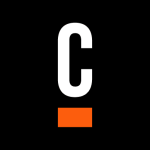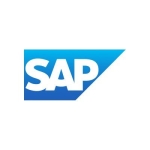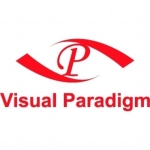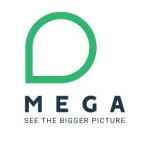What is our primary use case?
We use it for enterprise architecture information, with the main purpose today being to analyze our IT investment portfolio and the architecture related to it. That includes process, data, applications, and infrastructure. We collect all of that information by each of our initiatives or projects and we analyze it there. It gives us a single source of data.
We're using the latest cloud version.
How has it helped my organization?
It requires a lot of effort to really standardize and have a single source of truth. All of that effort can pay off when we scale and grow more and we can keep building on top of that. The functionality allows us to do that, even though I don't think we are using the full range of its capabilities yet. Because we are using the cloud version, they keep bringing new functionality. That sometimes allows us to do things in a better way.
We now have one way for communicating between IT and business, and that's true, as well, for our partners or implementers when we do IT projects. That way, everybody is talking about the same elements and we don't have different versions to refer to. The benefit is mainly in communication and collaboration.
In addition, the HoriZZon portal allows us to generate visualizations and charts that can be understood by people who aren't enterprise architects. We just started using that more extensively one month ago. It requires some understanding of how the data source works, but after you get to that point, it's pretty easy to start generating charts and information that non-technical people will get and understand. And at the end of the day, that is our purpose: to communicate to our broader audience. These visualizations and charts help business stakeholders assess and make investment decisions on technology to really optimize our IT investments, and they provide the right capabilities to achieve this strategy.
It will also help us to quickly identify where there are risks in our technology portfolio. We are implementing some metrics that allow us to measure and do a risk assessment of our applications. So far we have prepared all of the foundations to allow us to start creating that type of analysis. This is a very important aspect because it's a way that we can provide value to the organization, from the architectural perspective. So it's not only to help on the investment side, but also to prevent risk. In terms of putting plans in place to mitigate those risks, we are not there yet, but I think it will. We are still more at the stage of implementing the methodology, determining how we do assessments, and creating all of the metrics. When we finish those pieces, we will be able to use it to make decisions and plans.
BiZZdesign helps us look at everything in our enterprise architecture through a business capability lens, rather than in EA language. We are translating almost every single action from the infrastructure or technical level into what it means in terms of our capabilities or functionality.
The solution also brings high visibility into the costs of how we are set up in our infrastructure. It comes down to two main areas: helping us to decide where we should put our investment in the portfolio, and at the same time, how we mitigate risk in our current landscape. Of course, that includes costs. But because we are just building the foundation, we haven't done that yet, but that's what we are going to end up using it for: our IT investments and analyzing our operating models.
What is most valuable?
I like the flexibility of the modeling part for standards like ArchiMate and, at the same time, BPMN. It allows us to connect elements from different areas and to have a single repository and a single source of truth. It gives us one place to do analysis throughout the organization. I also like the dashboards.
Its breadth of capabilities is very good from the modeling perspective, as it really covers all of the standards that we use in our company and even some that we haven't really used yet. I'm sure we will use those others as well because we keep growing our information.
What needs improvement?
They are already working on this, but there is room for improvement in making it more seamless between the modeling and the analysis pieces. Sometimes you have to do some work in the backend to ensure that the HoriZZon portal really gets all of the information the way you want it. They are working on the seamlessness between what they call Enterprise Studio and HoriZZon. It's something we have voiced to their team and I believe it's in their roadmap.
For how long have I used the solution?
I have been using BiZZdesign HoriZZon since May of 2019.
What do I think about the stability of the solution?
The stability is pretty good. I have never lost any data, even if my connection has gone down. Because it's on the cloud, you really need to have an internet connection all the time if you're using it. But whenever my connection has gone off, I have never lost data.
What do I think about the scalability of the solution?
So far, the scalability is pretty good. We could keep growing and adding a lot more use cases that we don't have today.
We want to keep growing more use cases, more metrics, more analyses, and that means getting more data into it. One of the bigger challenges is how we ensure that the data is consistent and that it's the right data. And we need more people to maintain that data. Ideally, you should be connected to the source, even if it's done automatically with less people. That's where we need to keep growing, to make the ingestion of data more automatic.
How are customer service and support?
Our experience with their technical support has been very good. They have a system where you raise a ticket in their online support. By answering different questions you are able to raise how critical the issue is. For the ones that I have raised that were very critical—and that has only happened on a couple of occasions—they have responded very quickly; within one hour. For the other ones that are not that critical, there is still a good response time. Overall, it's pretty good.
Which solution did I use previously and why did I switch?
We were using Excel and Visio and SharePoint. In addition, I and maybe one other person were using the free software called Archi, which has some modeling capabilities based on ArchiMate. We are still using Visio for business process modeling and that's mainly because it's quite expensive to give licenses to everybody. So some people are creating business process models in Visio, and then we upload them to BiZZdesign. We also still have a lot of data in SharePoint.
We brought in BiZZdesign to have consistency in our information and so that we don't have to update an Excel file 10 times, just to produce one analysis. With Excel we also didn't know which one was the latest version and that created a lot of challenges. Now we know the information is in one place and that we should just be looking there from now on.
In terms of making the business case for bringing on BiZZdesign, the vendor helped by providing insights and charts we could share with business leaders. We also got some guidance from third-party reviews. We agreed that we needed an enterprise architecture tool to help us to mature and organize our information and analysis. After that, it was more a matter of which one to choose, and that came down to a cost-benefit analysis.
How was the initial setup?
The initial setup was straightforward because we are using the cloud version. The part that took us slightly longer, but it was not that bad, was to ensure that our IT directory was connected to BiZZdesign. We used the same security setup that we have in the company. But that was okay.
We did the whole implementation within three months. It only took a couple of weeks to have the system running, and after that it was more up to us to decide and define how we were going to start using the tool. The tool is really open to whatever you are using in your company. So there's some work to do in defining your metamodels and what kind of data you want in it, and around how to implement or define the processes that you want around management of data.
What about the implementation team?
We used consultancy services from BiZZdesign. They were with us for four days. They not only helped us to learn how to use the tool, but from the enterprise architecture perspective, they showed us how to take advantage of it as well. That was pretty good.
From our side there were just three people involved. And that was more because of the data that we wanted to collect from different areas. We had to understand the current situation, what information we had available and whether we could upload it straight into BiZZdesign or we needed to do some compression of the data to allow us to use it.
Our whole team is involved in maintaining it. Everybody is responsible for their own information, so everybody has to add different pieces. Ours is a small team today with seven people, although I am the sole administrator. The team of seven is using the modeling piece and ensuring the data is being collected, but we have around 80 users who are reading and consuming the information from HoriZZon. They are mainly the IT community, in different IT areas. We have some business users, what we call "business sponsors," at least one per function. We also have an internal auditing team that is doing all of the analysis of risk in BiZZdesign.
What was our ROI?
We have seen ROI, but more from the non-financial benefits. The ROI is that our architectural practice has matured and BiZZdesign tools have supported that maturity process.
The speed to value is more dependent on the team than the tool. It's more a matter of the number of resources and the amount of time that we can dedicate to it, rather than the tool having any limitations. But the time to value is pretty fast, considering that we are a small team.
It took us almost a year to start showing value, and we are still in that process. It's only now that we have the foundation there and have established the processes where we can start seeing the different analyses and perspectives.
What's my experience with pricing, setup cost, and licensing?
There are no costs in addition to their standard licensing fees.
Which other solutions did I evaluate?
We evaluated MEGA, Orbus and LeanIX.
LeanIX didn't have the whole modeling capability and we really wanted that. Orbus was connected to Microsoft and, in theory, that gave us some good options, but their pricing model was based on every single functionality having a price. The pricing was comparable but if we wanted to scale, it would have ended up being a lot more expensive. BiZZdesign gave us one price with all of the functionality, and we could scale as much as we needed.
What other advice do I have?
Start simple and be consistent and understand what is the longer-term vision, as well. That way, you know what the next step is and can keep growing in that direction. If you try to start with a complex model and to capture every single piece of data that is important from the beginning, it's going to be a bit bigger task. And because you really need to start showing value, you need to start with a small amount of information and keep growing from there.
HoriZZon, is an important part of the solution. For any use case that you create, you should really create it in parallel on the HoriZZon dashboard and analyses. That will allow you to start showing the value of the information that you are putting in to a bigger community. We took slightly longer to start doing that.
Disclosure: PeerSpot contacted the reviewer to collect the review and to validate authenticity. The reviewer was referred by the vendor, but the review is not subject to editing or approval by the vendor.

















This doesn’t ring true at all! Would have been nice if the author mentioned which version he’s reviewing! This tool has been continuously classified as a leader in the Gartner MQ for several years. Btw. I don’t work for BiZZDesign.